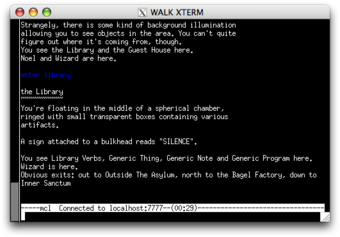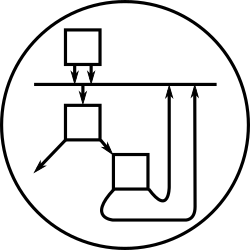3-MOVE

3-MOVE is a multi-user networked online text-based programmable virtual environment that I designed and built during 1997 and 1998, based around a series of similar systems I had been building stretching back to 1994 (for example, oom). All these experiments were originally inspired by Pavel Curtis’s amazing LambdaMOO software, and its influence can be seen in many aspects of 3-MOVE’s design.
It includes a programming language compiler, virtual machine and standard libraries intended specifically for building shared, multi-user object databases and virtual environments. Users of the system can learn the language and construct new kinds of objects in the world, scripted with behaviours provided by the users themselves. A simple extensible adventure-game-like command parser lets users add to the vocabulary of commands understood by the system.
The whole system is licensed under the GNU Affero General Public License.
Features
The world server:
- Persistent object-oriented database.
- Programming language, compiler, and standard library.
- 32- and 64-bit support (originally for alphas!).
- Stable, platform-neutral database format; support for database upgrades.
- Simple security model (like many other aspects of the system, inspired by MOO).
- Precise mark-sweep non-compacting GC.
- Event-driven I/O.
The language, MOVE:
- Prototype-based object-oriented language. Each object can have zero or more parents.
- Each object has two namespaces: one for methods, one for instance variables.
- First-class functions (lambdas). Closures. Higher-order standard library functions (map, etc.).
- First-class continuations.
- First-class preemptive green threads.
- Integration of language features with VM’s security model.
The world database:
-
User-level names for objects are expressed in terms of the scope implied by the user’s current location, possessions etc.
-
Programmer-level names for objects are expressed in terms of explicit indexes (the Object Registry) and normal lexical scoping.
-
The world’s modelling of locations, containers, players, exits, and inter-player communication is heavily inspired by LambdaMOO.
-
The command parser is entirely written in MOVE.
-
Control over listening-sockets and connected-sockets is entirely done by database-level MOVE code. Threads and connections are stored in the database, like any other object.
-
A simple line editor subroutine is provided, implemented in MOVE.
Download
3-MOVE is hosted on github.
- download a current snapshot tarball
- browse the code
